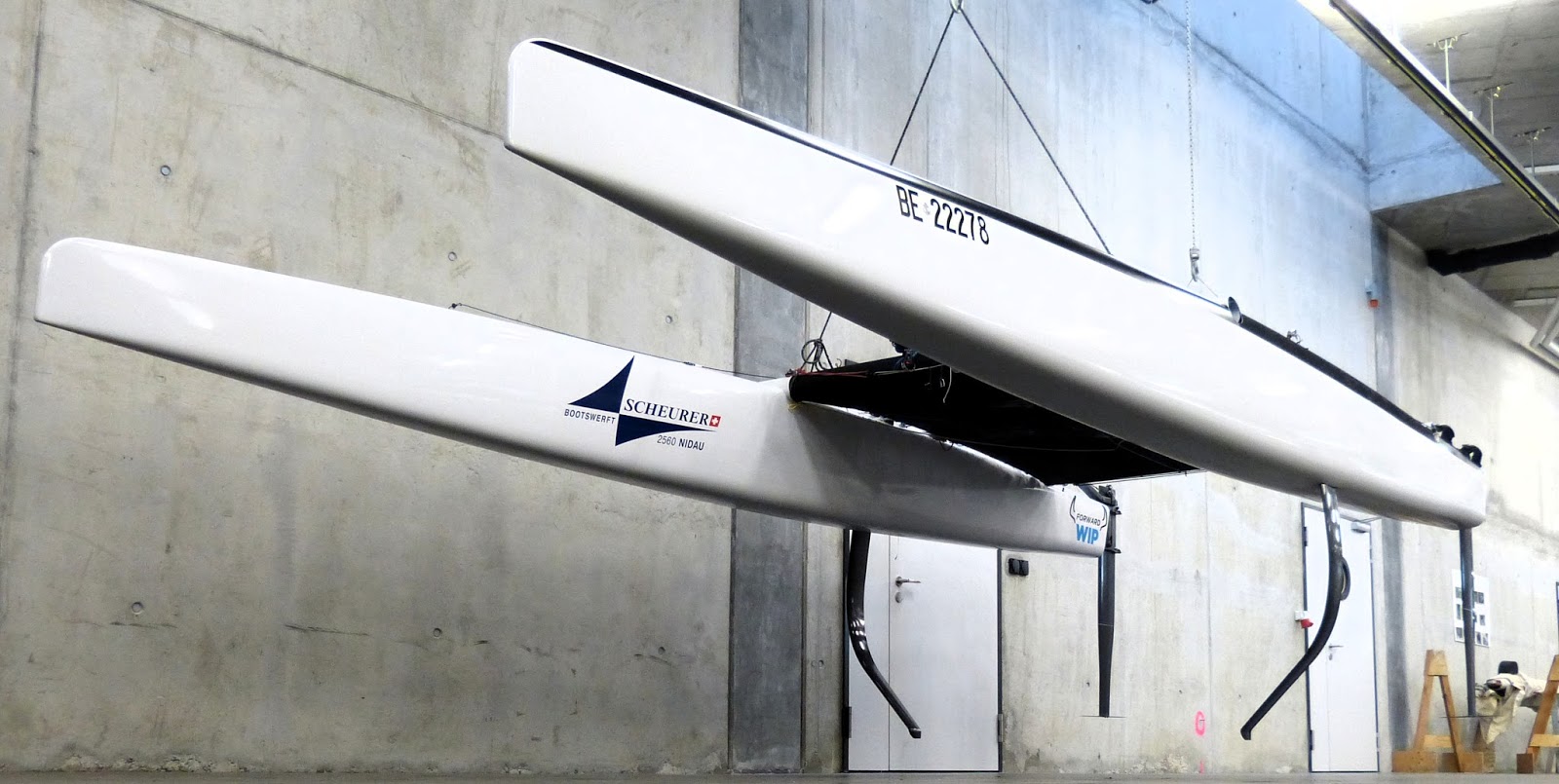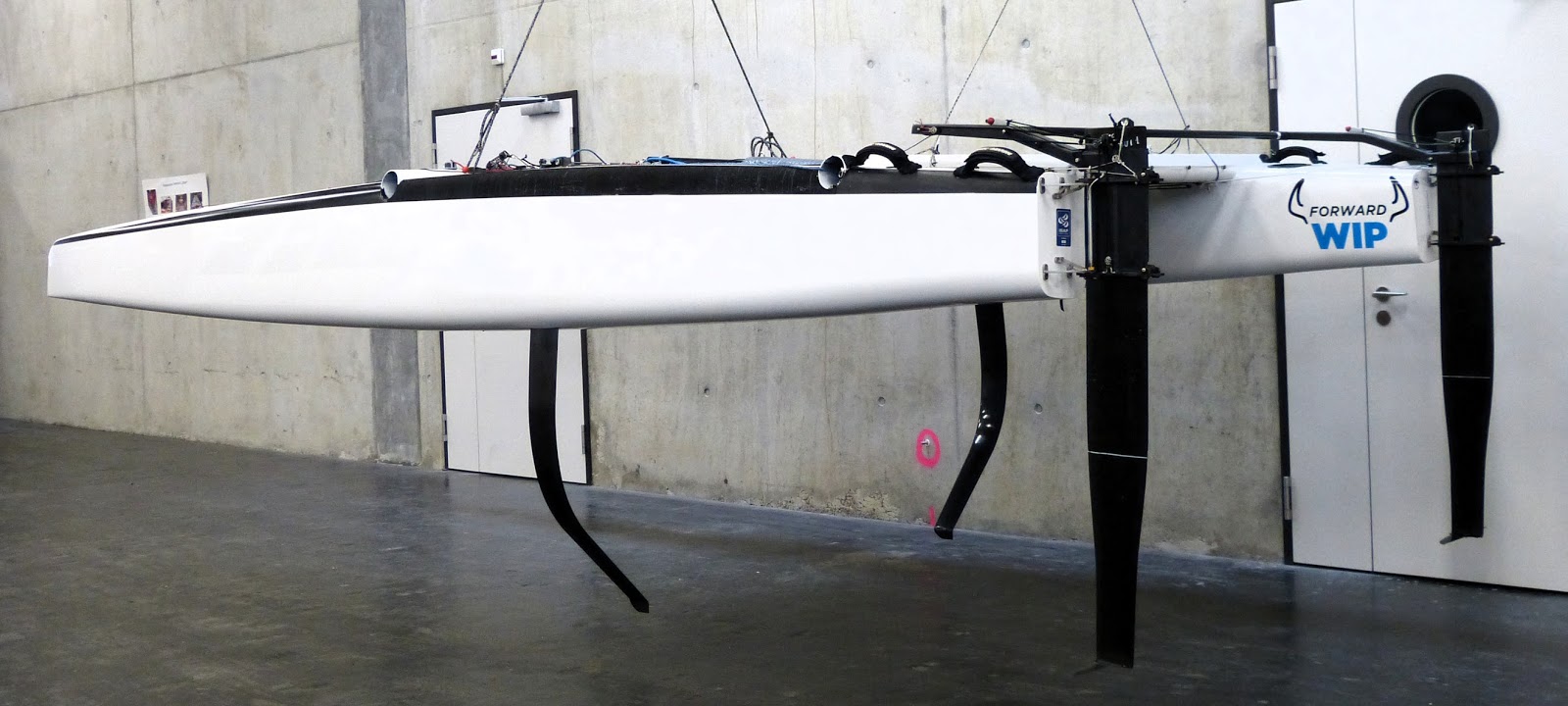New Foil Designs from Scheurer
Scheurer test pilot, Sandro Caviezel, unveils the latest foil designs for the Scheurer G7.
Best Christmas Gift Ever 
My intention was to continue with some recaps of the past sailing season and the development we did so far but there are some news I would like to share.
After the Worlds in Punta Ala we decided to develop a new daggerboard. Until the Worlds there was nothing available that was obviously faster as our J-board. But we already considered that the DNA guys are doing really well. One year ago in Maubuisson we could keep up with them, but as the conditions in that time were really unsteady and gusty, it was not easy to compare. Furthermore the water was really flat all the time which was good for our foil. Later in Punta Ala, we noticed that especially in mid range conditions with building waves, we were a little bit behind. This is based on our shorter daggerboard compared to others. If the breeze and waves were building, further up the differences were getting smaller as in strong breeze conditions everybody is struggling to keep the foils in the water (as also do other boat classes as eg. the Moths). We also noticed that in the lower wind range we were doing really well and we could keep up with classic C-board boats which is really an advantage. However, it seems that the new rigs are working so efficient that you can foil almost in every race that is held in regular conditions (wind > 5 knots).
Based on this analysis, the design goals for our new daggerboards were:
- improve stability
- keep light wind performance
- more lift (for light wind foiling downwind and upwind foiling in mid range conditions)
Improving stability and getting a longer foil was going hand in hand by opening the angle of the lifting surface a little bit. If you take into account a force equilibrium of an A-Class platform using both daggerboards for foiling, you can find an construction angle for which the leeward foil has a force-minimum to produce (boundary conditions: foiling on two foils). With CFD simulations we took into account deformations (and therefore change of the angle of the lifting surface) to get the right angle while loaded.
Next design goal was to keep the existing light wind performance while increasing lift. The light wind performance is best analysed looking at the upwind performance in floating mode. We were playing around with toe-in angles and symmetrical and asymmetrical sections. It was a little bit like finding a needle in haystack to find the optimal solutions for upwind sailing and downwind foiling. The tricky thing is to get everything sorted out so that the daggerboards are pushing against each other on the downwind and so creating a big "V" which gives you great stability. The sections of the board have to be carefully selected so the windward foil doesn't produce a force while sailing upwind to not loose any righting moment.
To cut a long story short, we think we found the solution. Just to give you an idea of how sensible the whole system was: During development we started with the daggerboard “01a”. Every time we changed the outline we also changed the number . Whenever we changed the section we also changed the letter. The final solution has the internal number "14o" ;-)
Development was quite time-consuming which resulted in not being on the water since the Worlds in Punta Ala. We took advantage of a little bit of wind last Monday to go on the water for the first test. We were still sailing with classic mains and tramps so we could compare only the old daggerboard to the new one and the results were really convincing. We started in a very light breeze (below 4 knots) where no performance difference was noticeable. As the breeze was picking up a little (8 - 10 knots) we find a performance advantage of the new foil compared to the old one in terms of pure speed, controllability and handling. Upwind in classic floating mode we found no performance difference, so we tried upwind foiling (which was not efficient with the old daggerboard). It was possible to get the boat on the foils and the feeling was really great and easy. It seems definitely the way to go and I'm really looking forward to get things sorted out for upwind foiling. I think bringing down the point of sail force application using the new style decksweeper sails is the obvious next step.
The Next Steps:
We will run a few more tests and improve some details for final production solution of the daggerboard. We should be ready for production mid February. I will keep you up to date. Next test will be together with Sascha who was developing in the meantime together with Felix & Landy the LOD decksweeper and tramp.
So, we (Daniel, Andy, Aron and the Scheurwerft crew and myself) wish you a peaceful Christmas season and a good start to a promising year 2016.
Cheers!
Sandro



